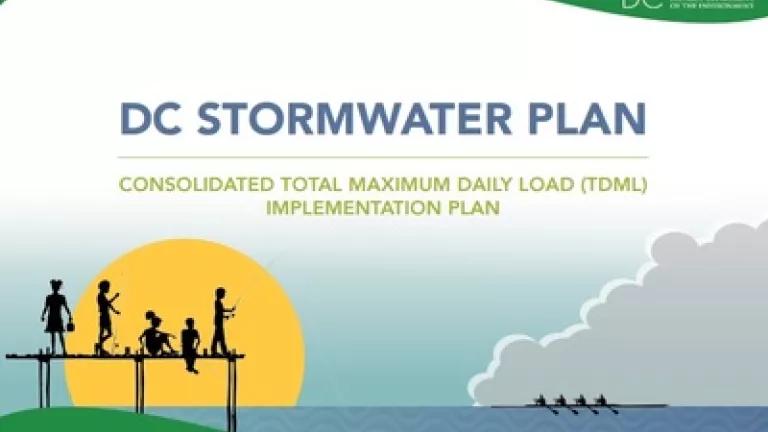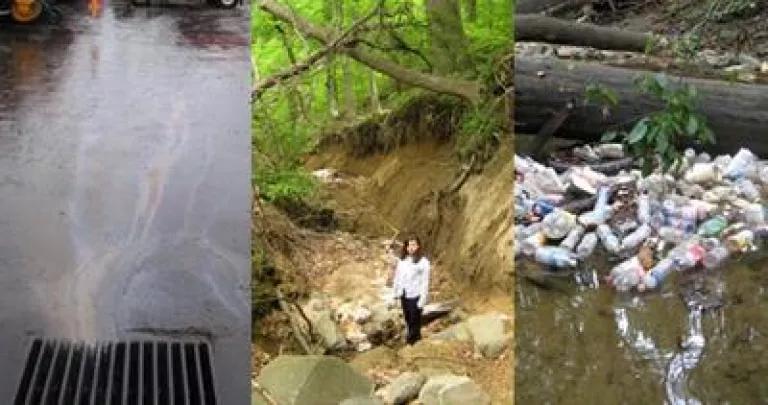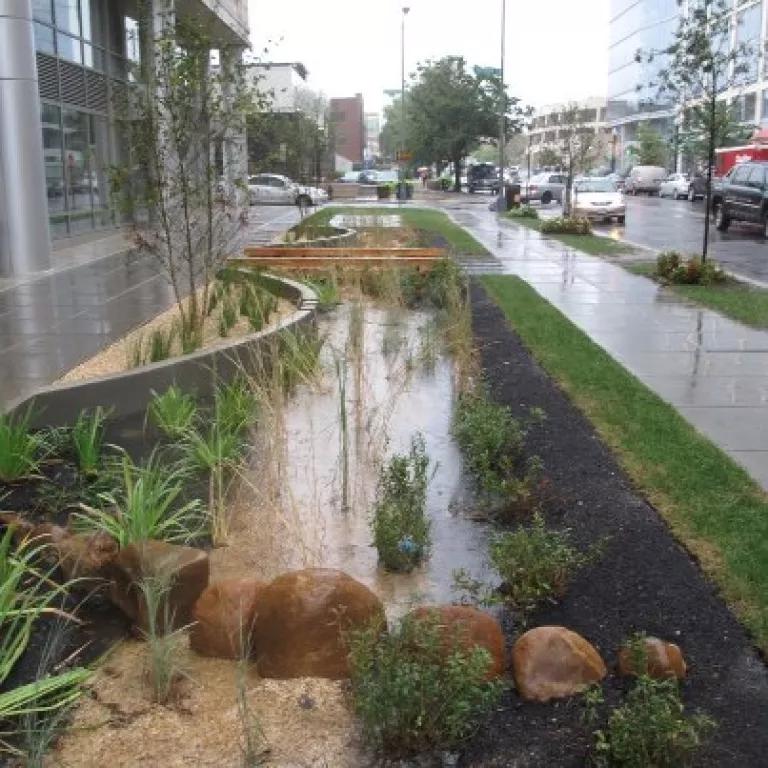
What would you say if I told you that the District of Columbia's Department of the Environment has proposed a long-term action plan to reduce harmful stormwater pollution so that the District can meet its clean water goals? Sounds great, right?
Now what would you say if I told you that this "action plan" doesn't include any new actions, and it doesn't propose to meet those clean water goals until the year 2154?
Yes, that's not a typo, and this is not a joke. The District government is telling us with a straight face that we should wait almost 150 years for clean rivers and streams.
If you agree with me that that's unacceptable, you can weigh in and tell DDOE that it needs to do better. Its proposed plan - known as the "Consolidated TMDL Implementation Plan" - is online here, and you can submit your comments to DDOE any time before August 14.
In the meantime, here are some details about the proposed plan and how it needs to be improved.
The problem:
Every time it rains, runoff from developed areas - like rooftops, parking lots, and roads - carries pollution through our city's sewer pipes and directly into our local rivers and streams without being treated. This runoff contains truly nasty stuff: trash, bacteria, metals, oil, grease, pesticides, sediment, fertilizer, and a range of other contaminants. In fact, thanks in part to stormwater pollution, the Potomac River, Anacostia River, and Rock Creek are legally declared "impaired," meaning they do not meet Clean Water Act standards and are unsafe for activities like swimming, fishing, and boating.
The solution:
This is where DDOE's clean-up plan comes in. The agency has proposed this plan, which is required and enforced by the Environmental Protection Agency, to reduce the District's discharges of stormwater pollution. The plan is designed specifically to eliminate stormwater runoff's contribution to local water quality problems (so it's distinct from other water pollution control plans like DC Water's plan to curb raw sewage discharges into local waterways).

Stormwater dumps pollution into waterways and erodes stream banks.
This process is a huge opportunity for DDOE to establish an effective plan for cleaner water in the nation's capital, but DDOE's proposal misses the mark.
Here's why: the action plan includes no new needed actions, and it ignores multiple tools in the toolbox that are available.
Rather than suggesting steps that the District could and should take to reduce pollution, the proposal bases progress on the agency's current level of effort and simply forecasts the date - 2154 - when clean water goals will be met. It doesn't propose any additional strategies or evaluate any other options that might accelerate the clean-up schedule. Instead, under this plan, the status quo would become permanent.
On top of that serious problem, the proposed plan also does not explain how or when some of the pollution targets will be met, even on the absurdly lengthy schedule that DDOE proposes. The plan "assumes" that technological advances will occur sometime in the coming decades that will result in additional pollution reductions, but we have no reason to believe that those advances will ever happen, or on what timeframe. This is just wishful thinking that shouldn't take the place of actionable steps that are available now, which could achieve the District's goals sooner than the middle of the 22nd century.
To DDOE's credit, the agency has recently adopted some progressive policies that will help reduce stormwater pollution in D.C. - primarily a set of updated regulations that set standards for newly developed and redeveloped sites. These policies, which form the core of the proposed plan, are described in this blog post from 2013 and on DDOE's website.
But DDOE wants to rely on these existing programs indefinitely - even though they are not improving water quality quickly enough. Additional tools and stronger protections must be included in this clean-up plan if we want clean rivers and streams within 150 years.
The great news is that there are many practical options the District can use to cut back the amount of polluted stormwater runoff coming out of its sewer pipes.
For example:
- DDOE could raise the pollution control standards for private development, or bring additional types of private properties into the regulatory program (such as sites that are smaller than the current regulatory threshold of 5,000 square feet).
- DDOE could increase its own investment in multi-beneficial green infrastructure practices that capture rain where it falls and prevent runoff at the source -- like rain gardens, green roofs, and permeable pavement.
- DDOE could also ramp up activities that reduce pollution in other ways, like sweeping streets and cleaning out stormwater catch basins.

A rain garden capturing stormwater runoff in front of DDOE's headquarters.
DDOE should take the opportunity during this planning process to evaluate and incorporate these additional pollution control options and any others that may be appropriate.
It bears remembering that former Mayor Gray's Sustainable DC Plan established an ambitious but achievable goal of clean water in all District waterways by 2032. We should not abandon that goal when it is still within our reach.
Other jurisdictions in the region are making bold, forward-thinking commitments to cut their own stormwater pollution and clean up their rivers. For example, the District's neighbor, Prince George's County, Maryland, is using an innovative public-private partnership to retrofit large swaths of the county with green infrastructure over the next ten to fifteen years.
Washingtonians deserve the same innovative thinking, planning, and determination from the District. If you agree, you can submit comments on the plan (before August 14) by following these instructions from DDOE:
Comments to DDOE should be clearly marked "Consolidated TMDL Implementation Plan" and either (1) mailed or hand-delivered to DDOE, Stormwater Management Division, 1200 First Street, NE, 5th Floor, Washington, DC 20002, Attention: TMDL Implementation Plan, or (2) emailed to jonathan.champion@dc.gov.

